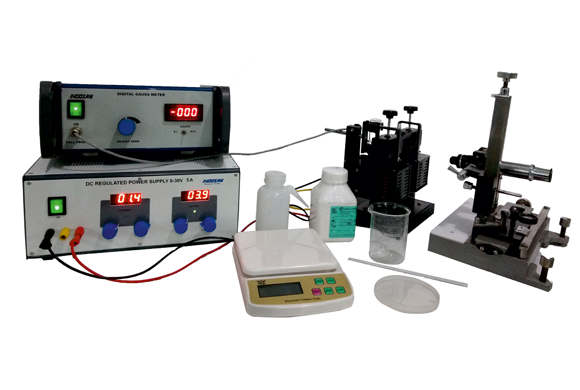
Principle and Working:
Quinck's method is based on the force experienced by a magnetised material in a non-uniform magnetic field and is a version of Gouy's method. It is specially adapted for liquids. On the basis of susceptibility, a substance can be classified as diamagnetic, paramagnetic and ferromagnetic, which is an important observation in material science.
...
In the present setup, the liquid moves under the action of the total force F until it is balanced by the pressure exerted over the area A due to a height difference h between the liquid surfaces in the two arms of the U-tube. Allowing for the susceptibility χa and density ρa of the air which the liquid displaces, it follows that,
A (X-Xa).(B2-B02)/2 µ0= Ah (ρ-ρa)g
where g is the acceleration due to gravity, ρ density of liquid, so that
(X-Xa) (B2-B02)=2 µ0h (ρ-ρa)g
by plotting h as a function of B2, the susceptibility χ can be determined directly from the slope of the graph.